32 Crafts Of Southeast Asia (part 2)
Jan 10, 2022 | Saima Khan
 Part 2 of 32 Crafts of SouthEast Asia
Part 2 of 32 Crafts of SouthEast Asia 32 Crafts of SouthEast Asia (Part 2)
The art of stone carving:
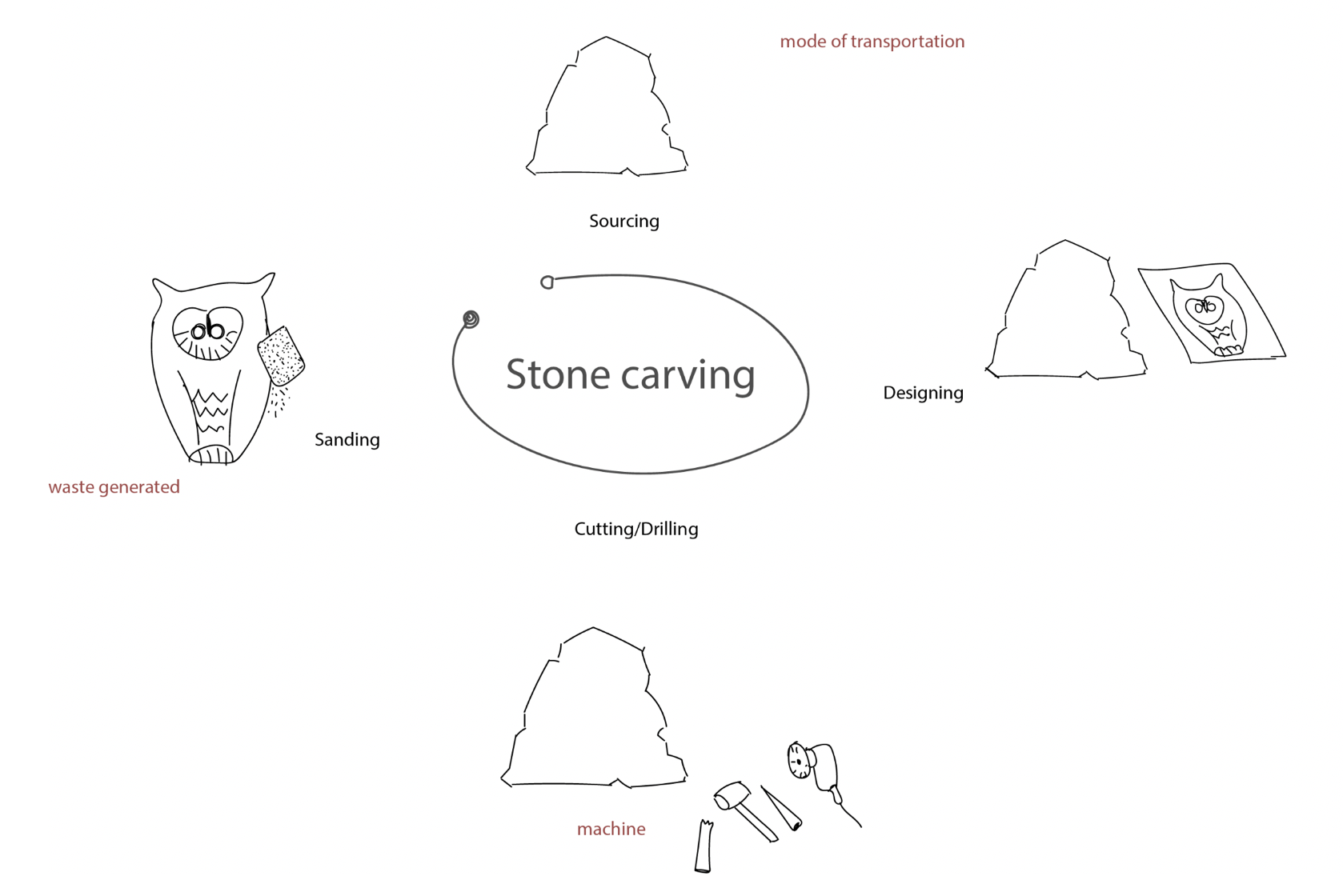
An ancient art that is breathtaking by nature, stone carving is a craft in which rough natural stone segments are shaped through a controlled removal of stone. This particular craft can be used for stone carvings for Mosques and Temples to simpler products such as jewelry boxes and even candle stands. The main clusters which produce stone carving items include: Mahanandi, Puducherry, Patna, Mysore and many more.
You can also find adaptations of this craft here!
Stone inlay:
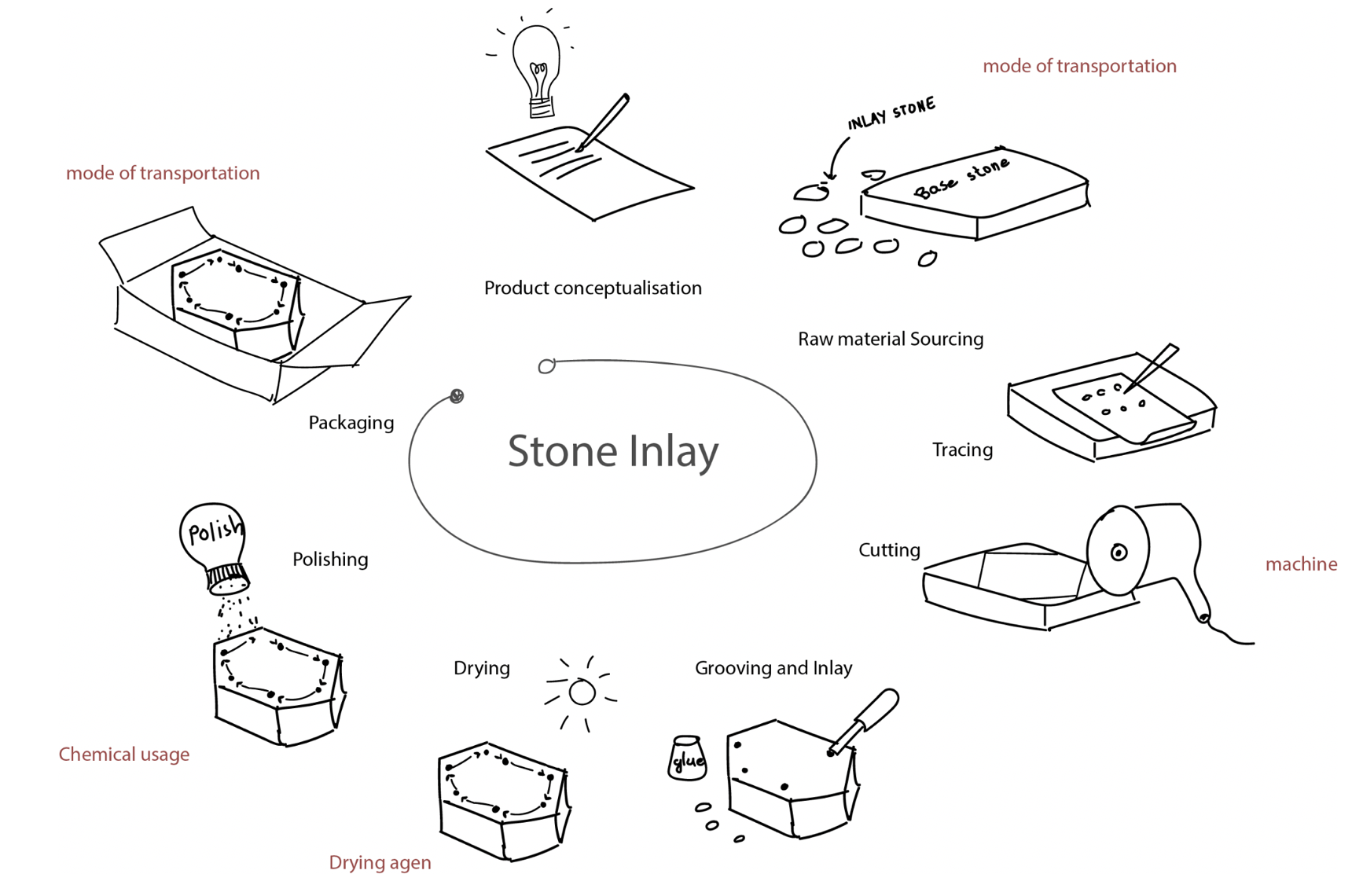
Taking the lead as one of the most popular stone crafts, stone inlay is an art in which artisans make odd blocks of stone more aesthetically pleasing. This is done by making skilled cuts, shaping the stone and polishing it. Marble inlay happens to be an integral part of the cultural heritage of India and it can be divided into three broad groups and each group can be an indication of what region the particular stone inlay product was produced.
The three categories include:
Fine inlay - This is the most intricate form of this craft as close to no machinery is used when it comes to fine inlay, truly testing the craftsman skills
Medium inlay - It’s name pretty much sums up what this inlay involves. The designs of the inlay are not as intricate as the fine inlay, however it is still similar in that it is still quite intricate but the designs are not as small. Machinery is also used.
Monumental inlay - This is actually not a type of inlay practiced in India but in Italy instead as it is the largest type of inlay
As mentioned before, there are regions known for different types of inlay crafts. For example Rajasthan is known for table top inlay as well as decorative wall and flooring inlay.
Purchase your own stunning stone inlay furniture from here!
Cane & Bamboo crafts:
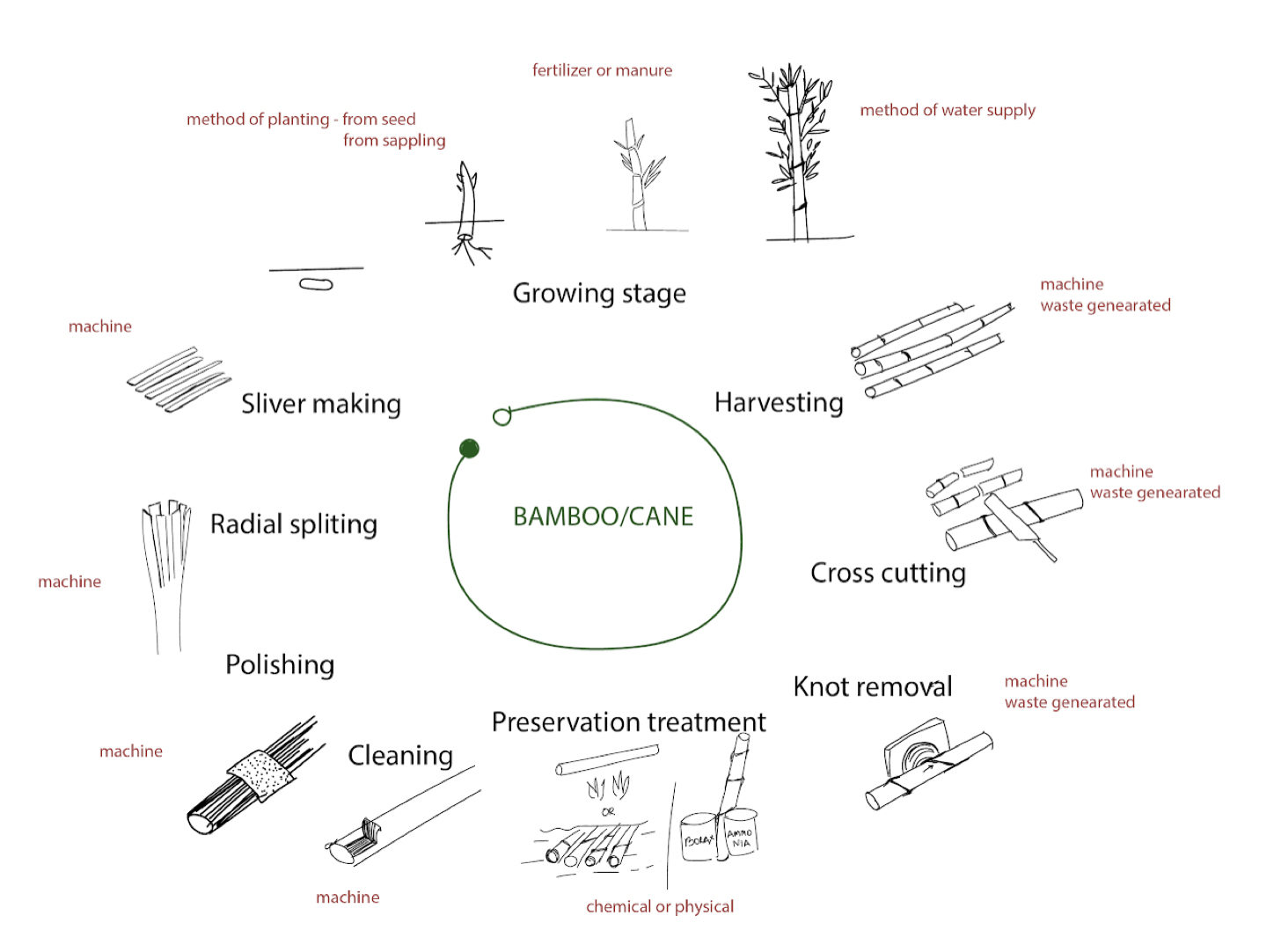
Alternatives to using wood as a source material, cane and bamboo are renewable resources available in abundance that happen to take a longer time to grow and are much costlier. Due to the nature of the materials, bamboo is more often used to make jewellery and decorative pieces such as partition screens, baskets, fishing rods, ladders, toys and mats. Cane on the other hand is used to make furniture pieces. The use of cane and bamboo products has become popularied over recent years throughout different classes within India, proving the crafts that are produced to be beautiful in nature.
There are many regions in India where these particular crafts are produced including: Assam and Tripura, Orissa, West Bengal and Kerala. Assam and Tripura are prominent places for this craft and are recognised both nationally and worldwide. You can also find these crafts here.
Filigree and Silverware:
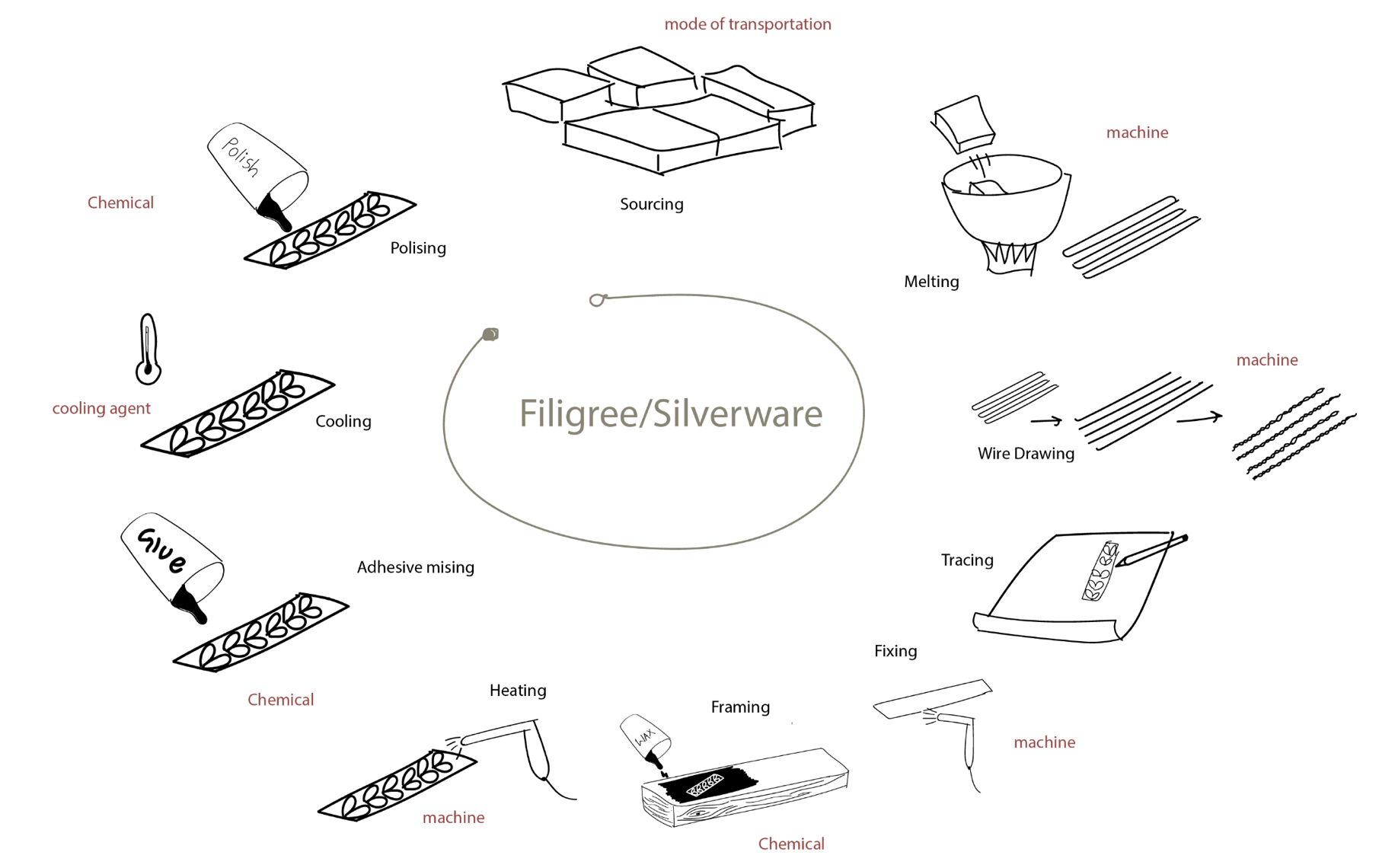
Silver filigree, is a craft involving a significant amount of precision, technicality and skill. This is an ancient technique dating back to 4000 years ago and is a technique that brings a unique and particular grandeur within the crafts produced
There are 2 major clusters where silver filigree is produced and those regions happen to be Cuttack in Orissa and Karimnagar in Andhra Pradesh where the practice is roughly two centuries old.
Despite how ancient this craft is, it is still accessible here!
Metal ware:
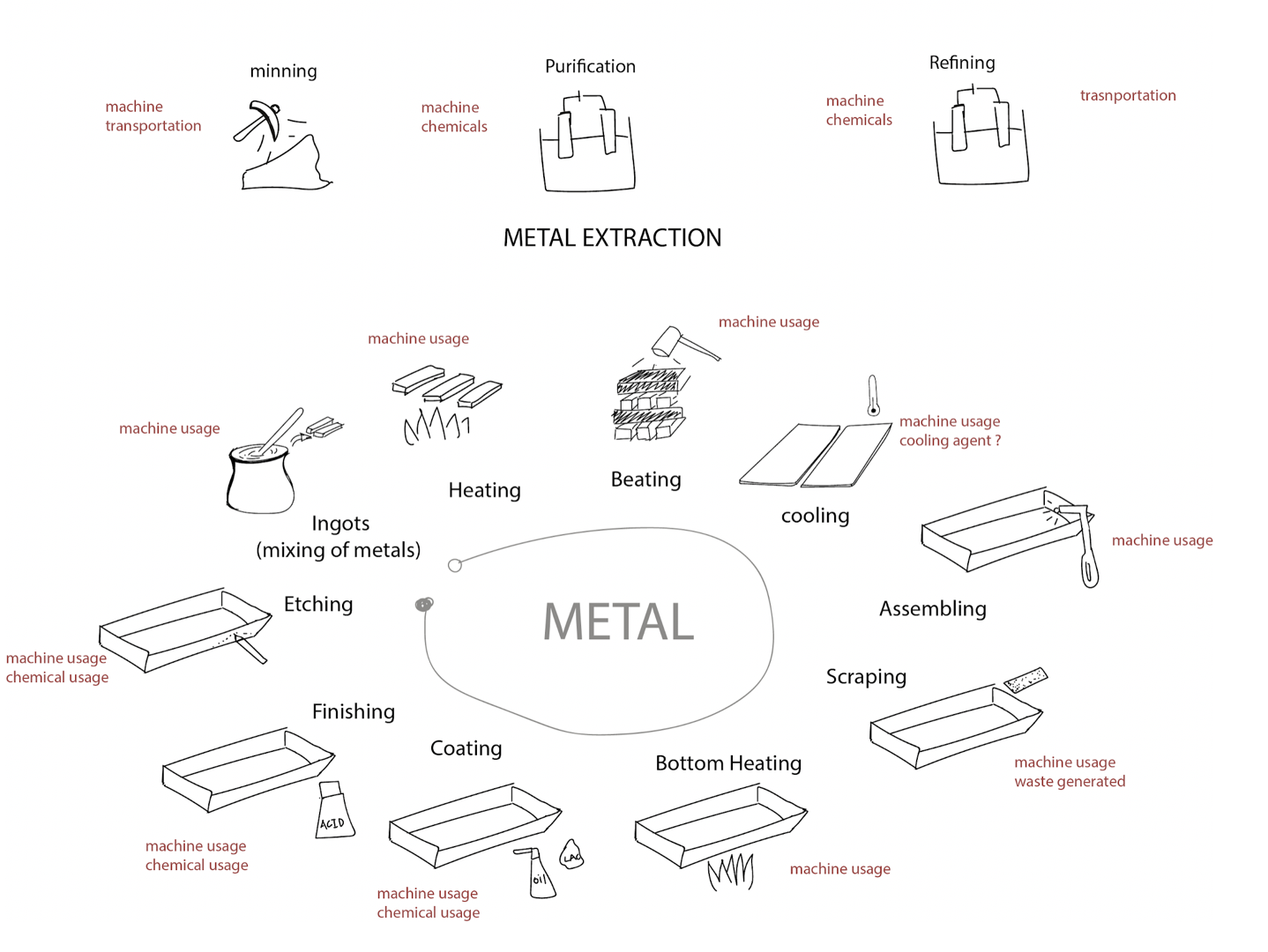
A fine craft where gold, silver, brass and copper are shaped into different idols, images, utility items and jewellery through intricate craftsmanship. India is the largest brassware producer in the world. Some of the major clusters for metalware and brassware within India are: Cuttack, Haryana, Salem, Moradabad and Madurai.
Bidriware: a metal hand craft that originated in Bidar
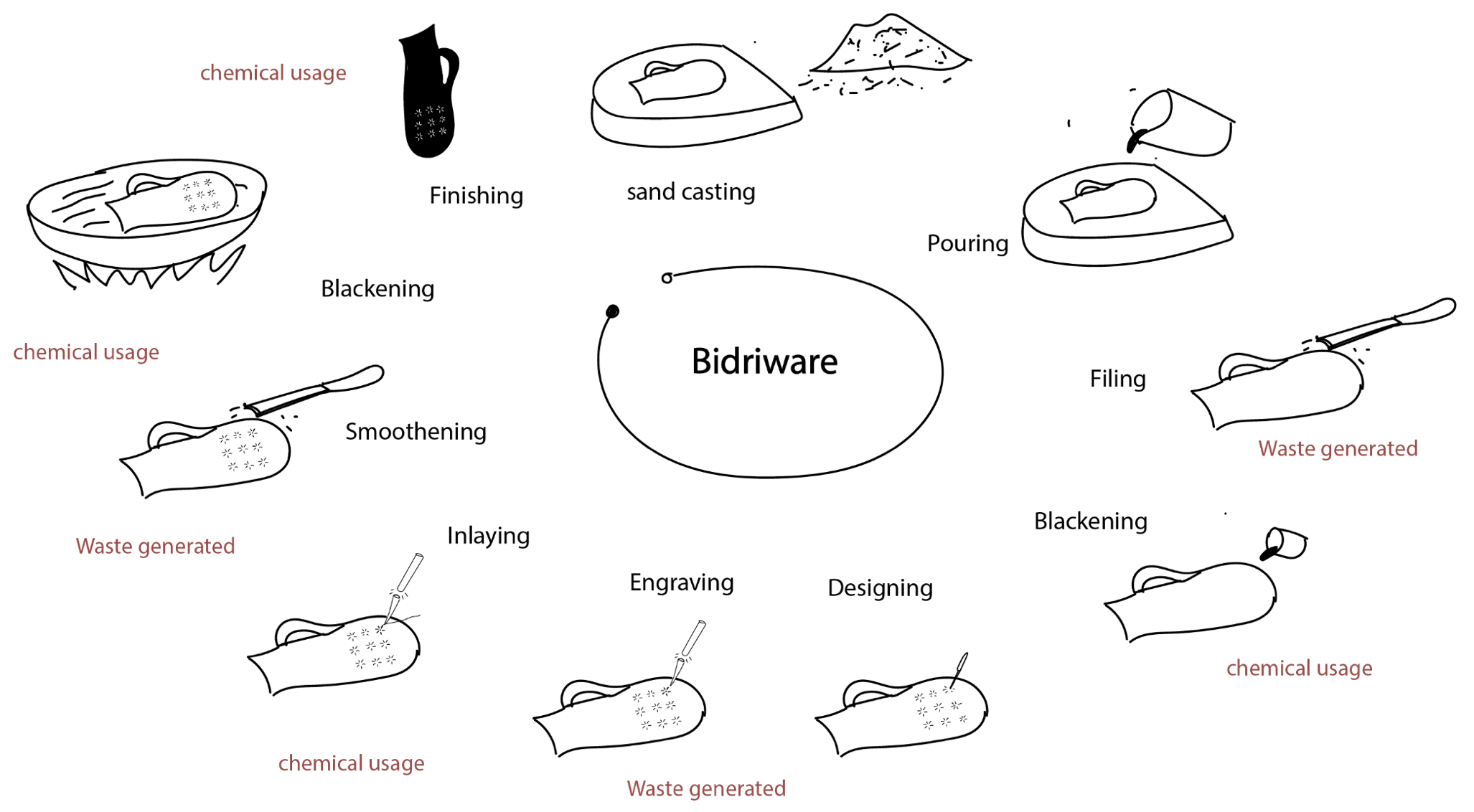
Till today's current day and age the chief centre of this unique metalware is Bidar. An encrusted form of metal ware where one piece of metal is inlaid onto another, a wide variety of products are produced. These products include: buttons, candle stands, trays, jewellery, tr boxes and bowels.
As one can imagine this is a complicated craft where a sequence of metal inlay on a zinc and tin alloy base. This craft is rooted in a Persian technique of inlaying silver and gold on steel or copper, travelling from Iran to Ajmer in Rajasthan in the 13th century AD. from Ajmer in Rajasthan this technique travelled to Bijapur and truly flourished during the reign of the Deccan Sultanate.This art is still mainly practiced in Bidar as well as, Hyderabad and Aurangabad.
Jewellery:
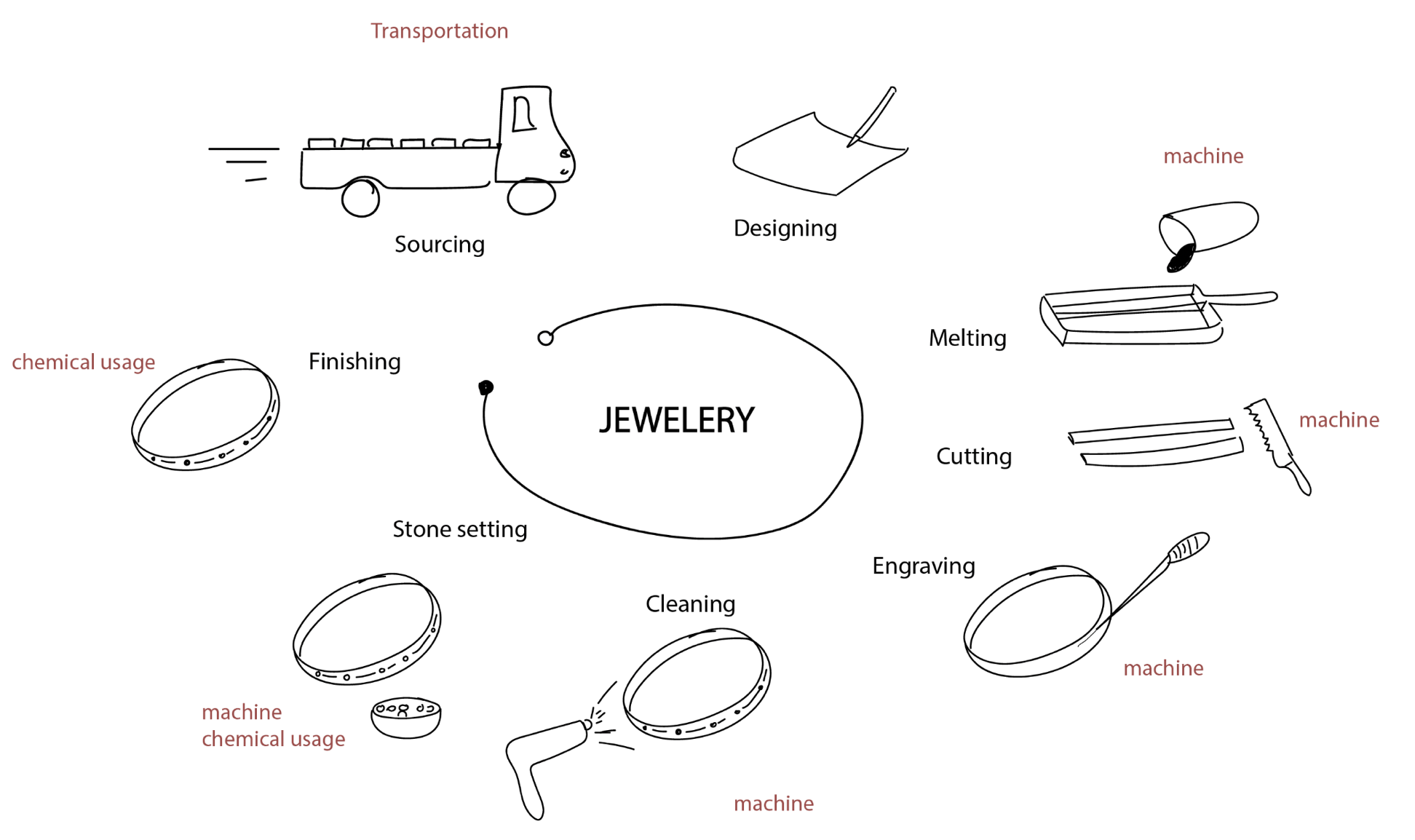
A craft India is known for as it is incredibly distinctive, there is no wonder why India is highly skilled when it comes to the crafting of jewelry. From imitation to real pieces made from gold and silver Indian jewelry is highly popular. The main regions producing this craft are: Delhi, Moradabad, Sambhal, Jaipur, Kohima, Nelore, Nizamabad and Nalgonda as well as many others.
Jewellery holds a lot of significance for people, whether it be due to sentimental reasons or if you just like to bling yourself out! However with an increase in fast fashion, jewellery is no exception and customers have noticed this. Now, if you have your own jewellery company click here to find out why sustainability is important for your business.
Pottery and Clay objects:
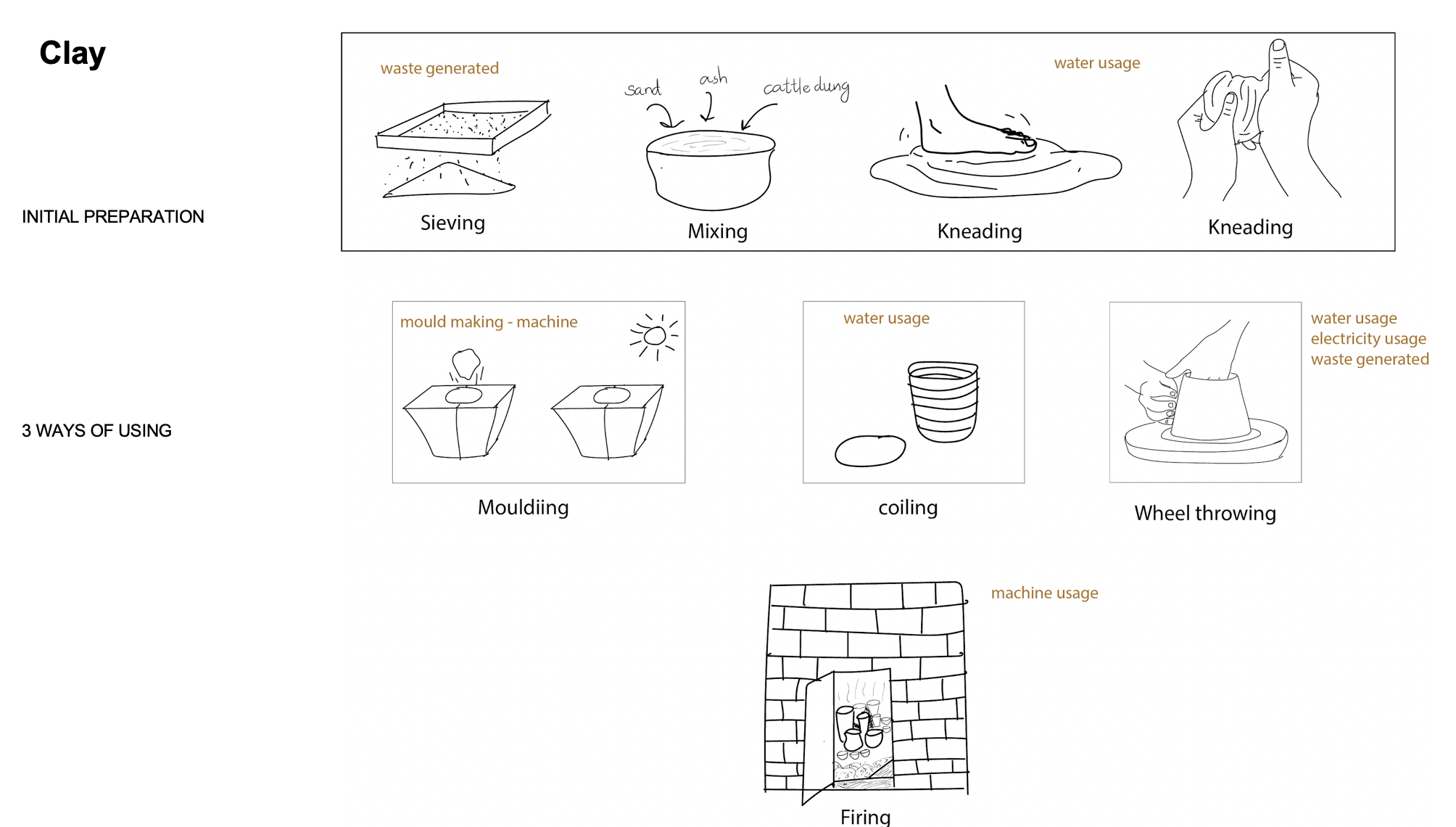
Perhaps the wide international appeal for clay products comes from the fact that there is a huge range of pottery and clay crafts within India. Sometimes known as the ‘lyric of hand crafts’ some of the most popular products of pottery include dull red & grey ware, black & red pottery as well as roulette ware. Sometimes pottery and clay work is pitted against the goods made from aluminum and plastic.
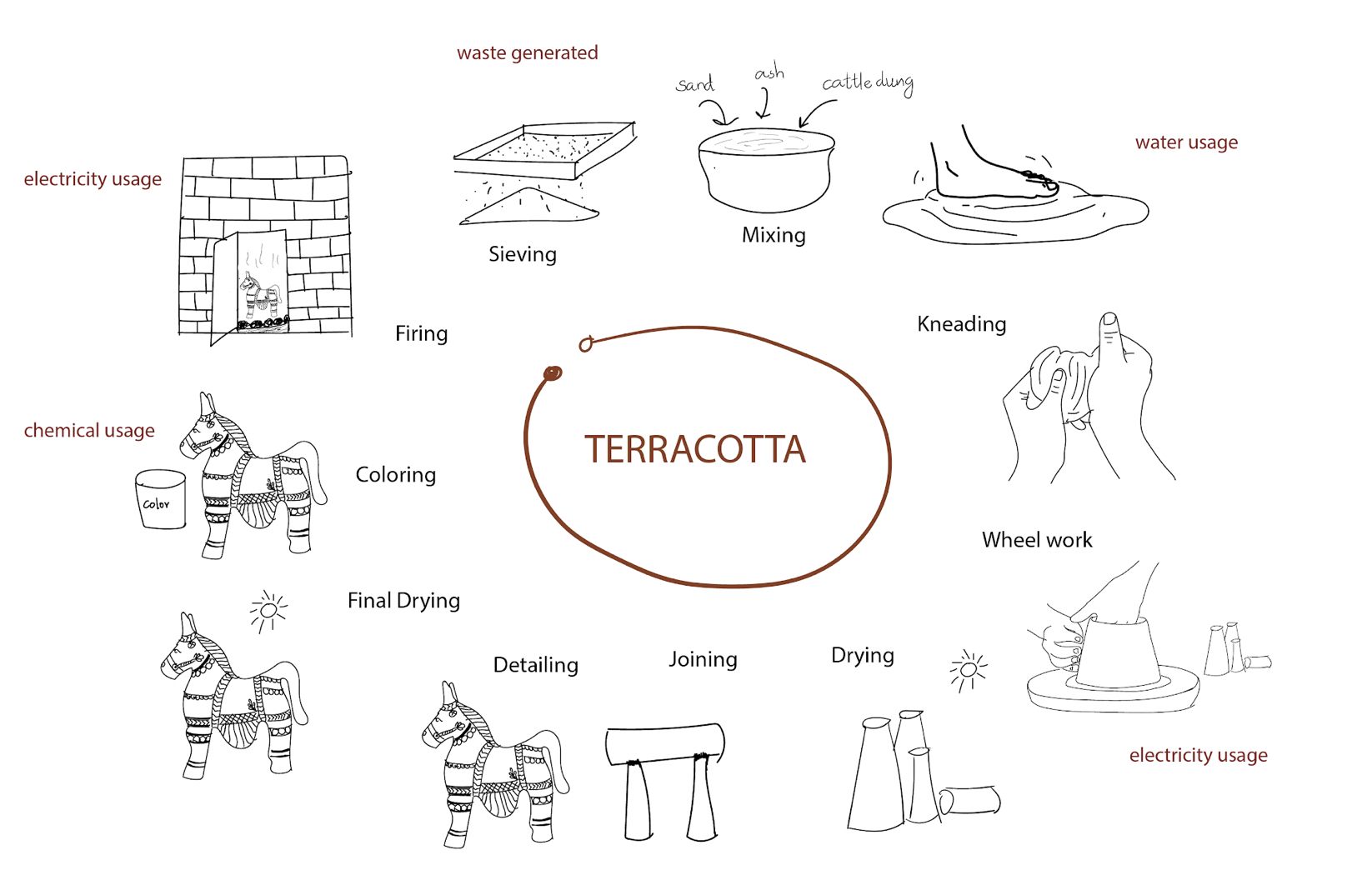
However, due to the rich history India possesses, potters happen to be the fourth largest community of artisans. The rich tradition of pottery is located across the country, where Assam produces a lot of the terracotta and pottery craft is found. Other regions and areas where pottery and clay craft are produced are: Chandrapur, Nizamabad, Bhadrawati and many others. You can get your hands on these from here!
The crafts that come from Horn and Bone:
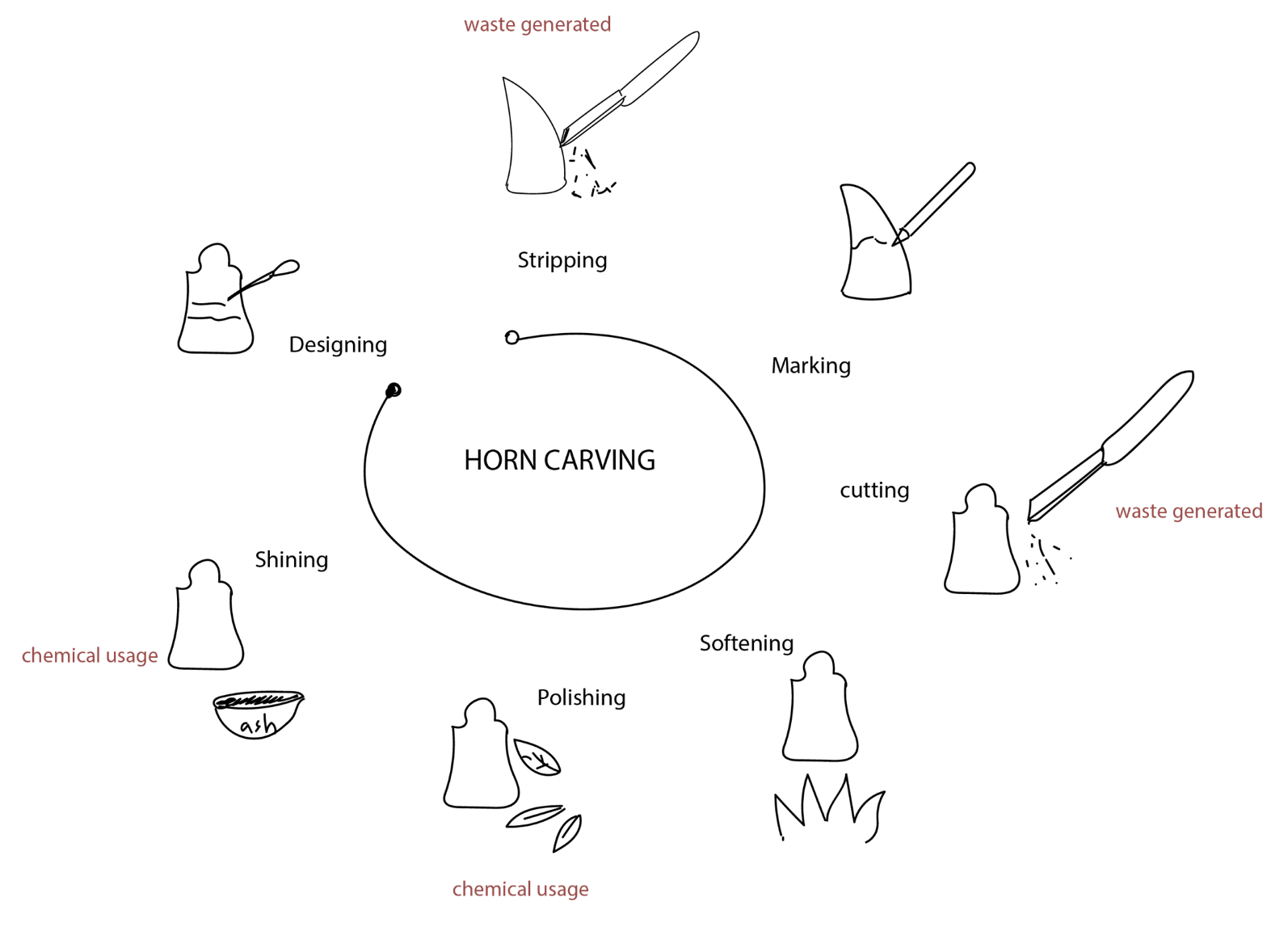
This craft is the craft involved in carving into animal bones such as antlers and horns, it is often a form of creating art. However after the ban that was imposed on ivory in 1989 came into place; the artisans involved in this craft took to carving animal bones and horns instead to keep their craft alive.
Different types of animal bones are used for specific types of bone carving. For example when horns are used they are often taken from cows, buffaloes, stag antlers and tusks. When bones are used within this craft they will often come from camels or buffaloes.
The centres which are most essential for this craft are: Lucknow, Sarai, Sambhal and Moradabad in Uttar Pradesh, Gajapati in Orissa, Honawar in Karnataka, Jodhpur in Rajasthan and Thiruvananthapuram in Kerala.
Musical Instruments:
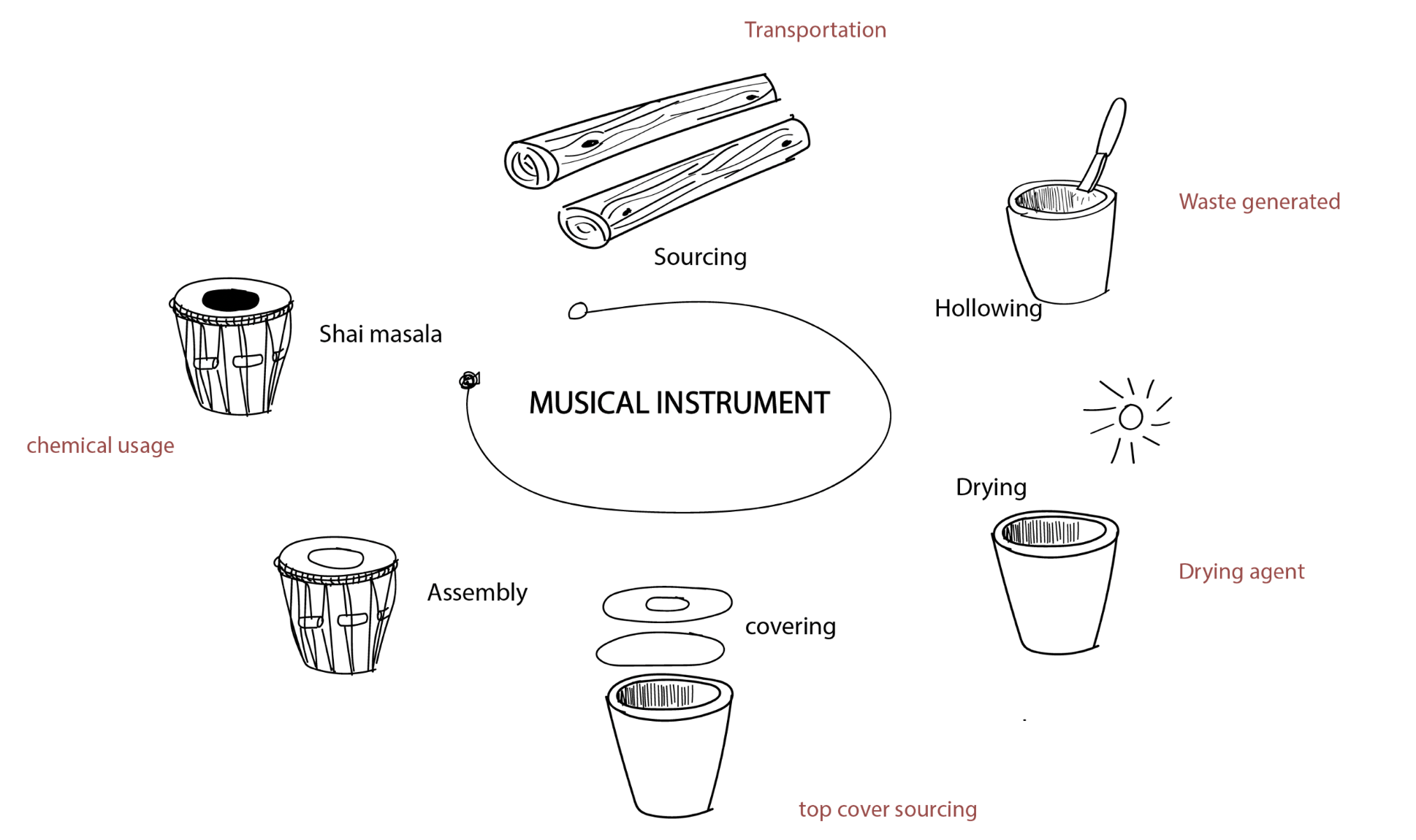
A craft that needs to be made with precision due to the high structural level, design, and complexities needed to derive the unique sounds within Indian music. Very specific materials are to be used to achieve the unique rhythmic sounds that come from these musical instruments. A couple of the popular instruments include ghatam, tabla, sarangi, flute, shehnai, and sitar.
The main producing regions for this craft include Kolhapur, Jodhpur, Ranchi, and Visakhapatnam.
The art of Folk Painting:
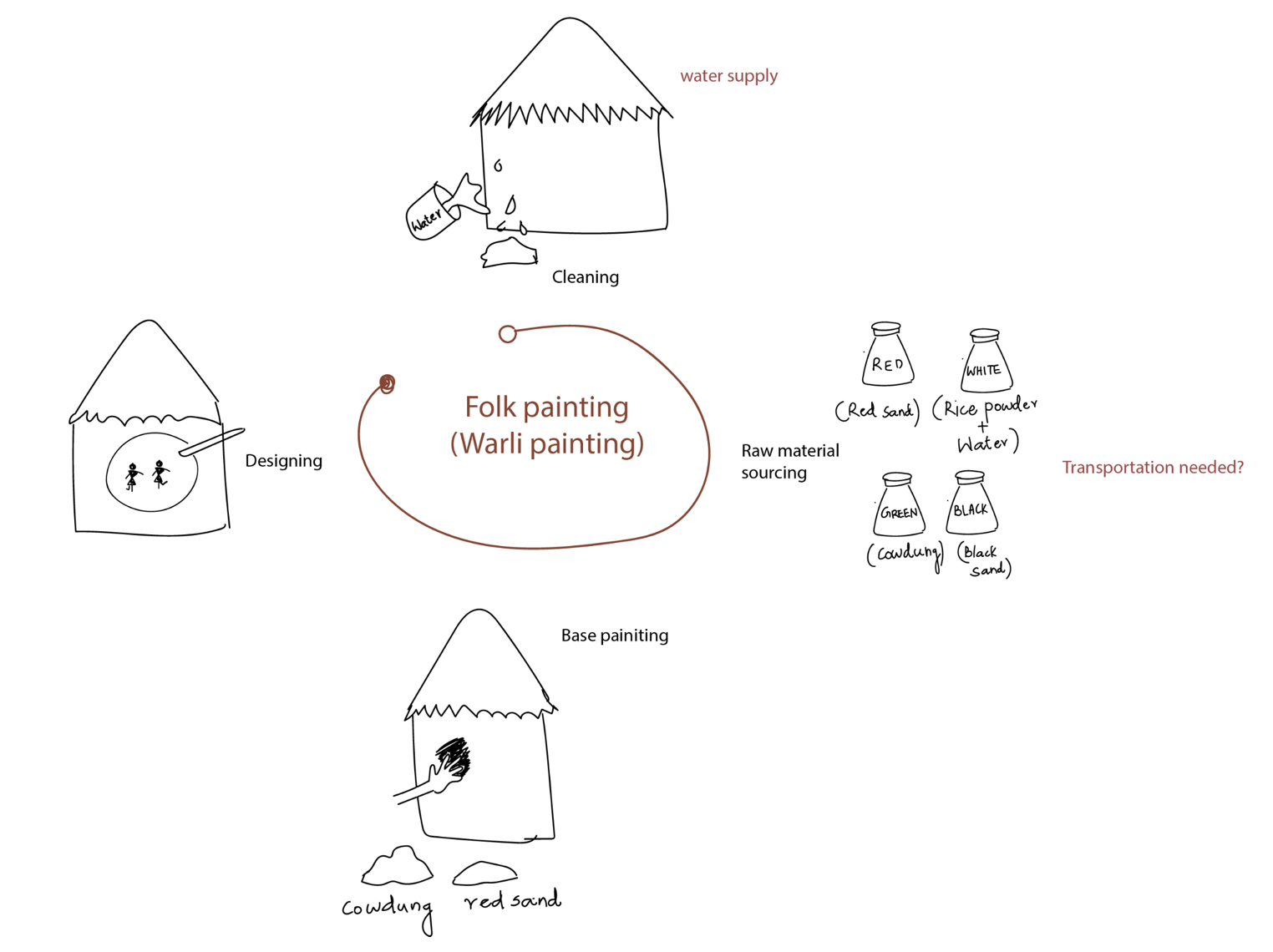
A form of pictorial expressions, Indian folk paintings are the paintings used by village painters to relay subjects from epics such as Ramayana and Mahabharata, Indian Puranas along with everyday events. There are a vast array of folk style paintings in India all with their own distinct style. They are vibrant and show different stages of epics. Different tribes are involved in relaying different epics, for example: Rajasthan is famous for Phad painting on cloth; the Gond tribe of Madhya Pradesh are involved in floor and wall painting and the Warli tribe in Maharashtra creates vivid Warli expressions of daily social events. There are many other types of painting such as: Pithora painting in Gujarat, Chitrakar painting in West Bengal, Madhubani painting of Bihar, Pattachitra in Orissa and Kalamkari in Srikalahasti.
Conch shell craft:
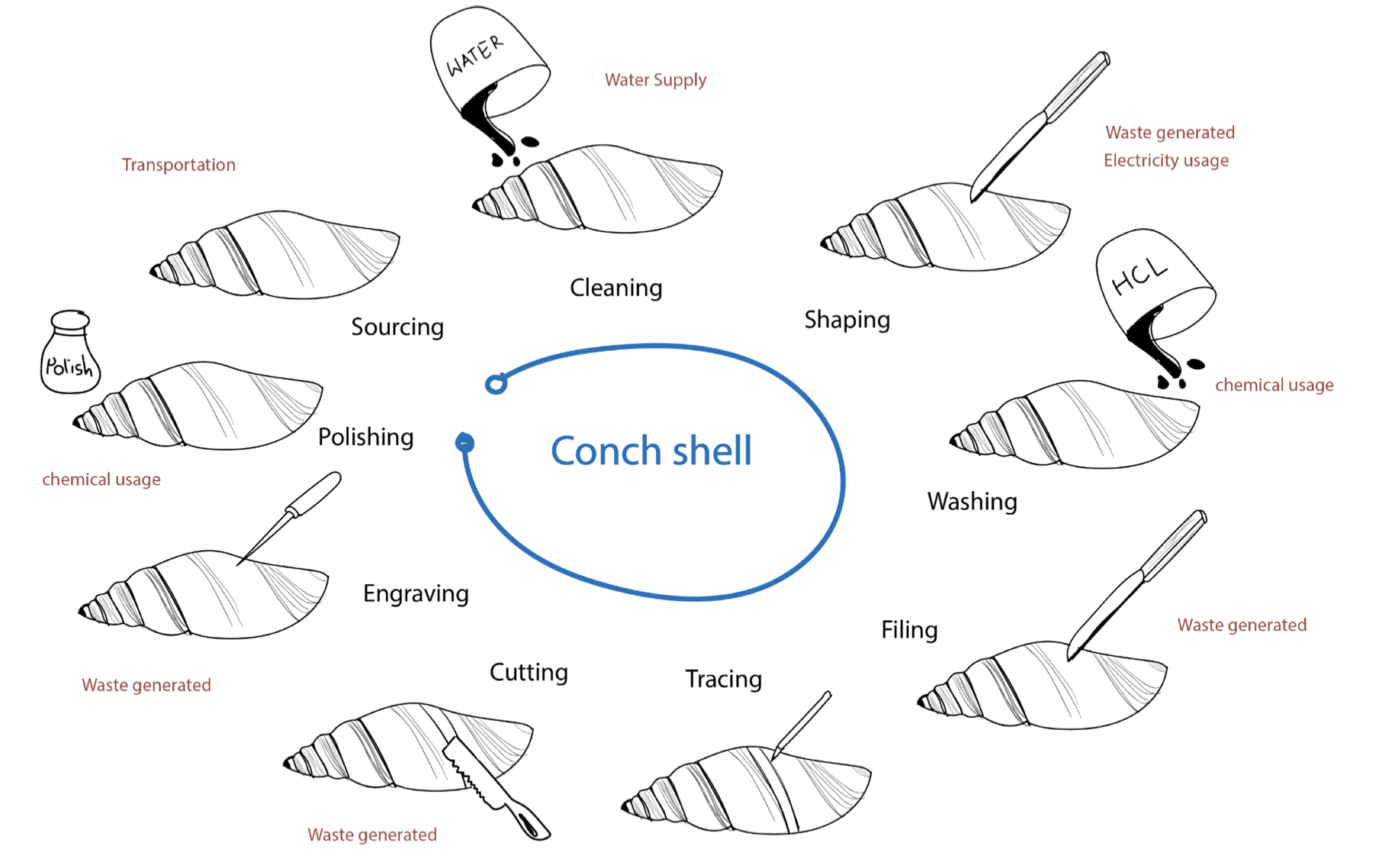
Bringing with it a social and religious significance in India, Conch shell crafts are used to create a variety of items such as designed animals to human figures which depict ethnic costumes of various sizes.
Whole conch shells which are used in marriages are usually very intricately carved. Conch shell bangles are more often worn in west Bengal. Other shell crafts include sculpting, painting and engraving seashells.
From this it is understandable that West Bengal is the main region for this craft. The products made in West Bengal include conch and cowrie shells where shallow carving and etching has been made. They can then be used as decorative prices for bags, clothing, shawls and many other things especially if they're smaller shells. The carvers come from a community called Saankhari in West Bengal, they mainly reside in Bishnupur, saaspur, Hatgram and Rampur.
The art of Coir Twisting:
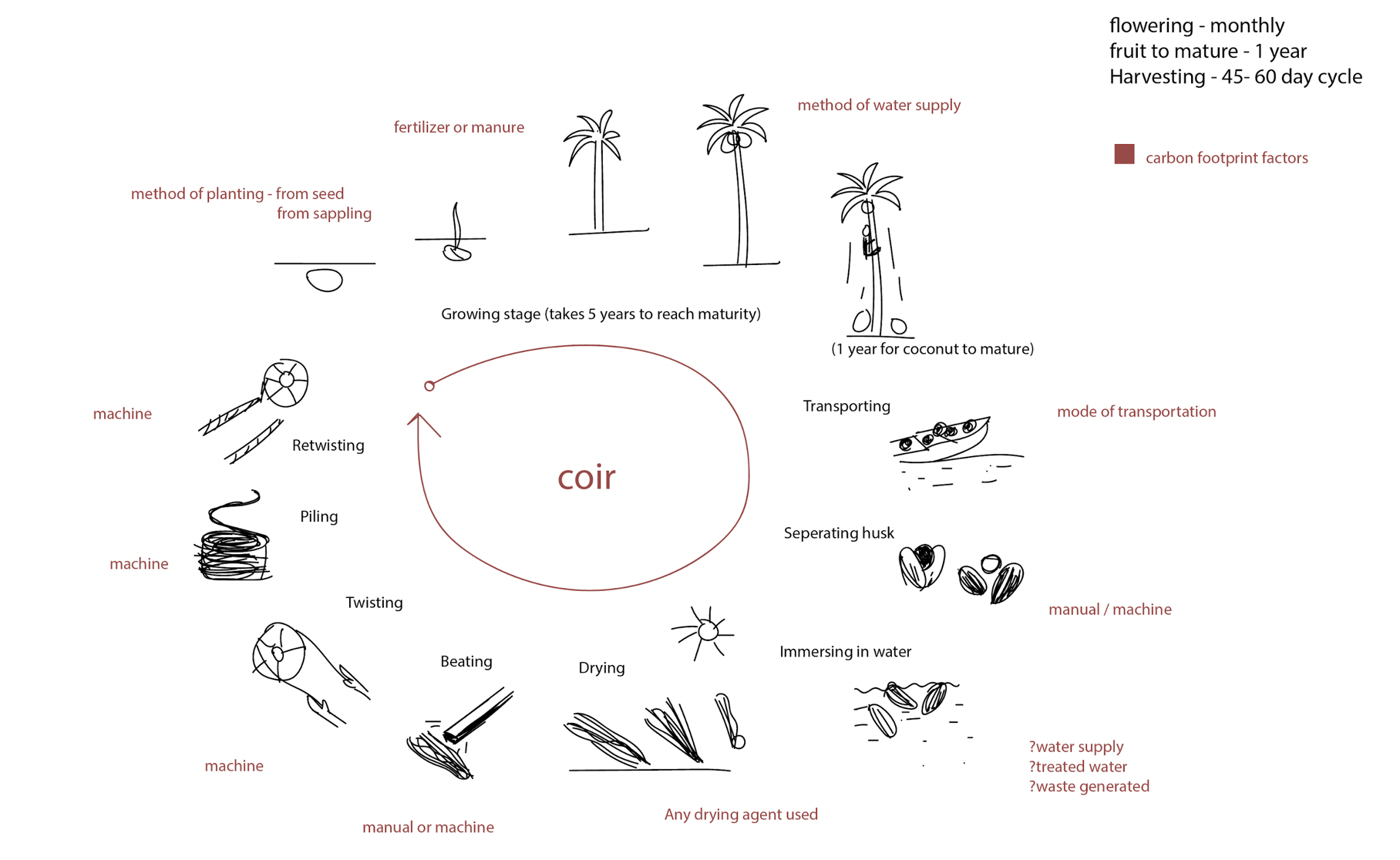
Extracted from the nuts of coconut palms, a tensile fiber that is both natural and eco-friendly is extracted called coir. Not only is it waterproof and an incredibly tensile fiber, but it is also found in abundance. Hence why coir is used to manufacture a wide range of eco-friendly products such as mats, toys, brushes, mattresses, keyrings, wall hangings, pen stands, and other home decoratives. This craft is mainly produced in Orissa and Kerala
The art that comes with Theatre, Costumes and Puppets:
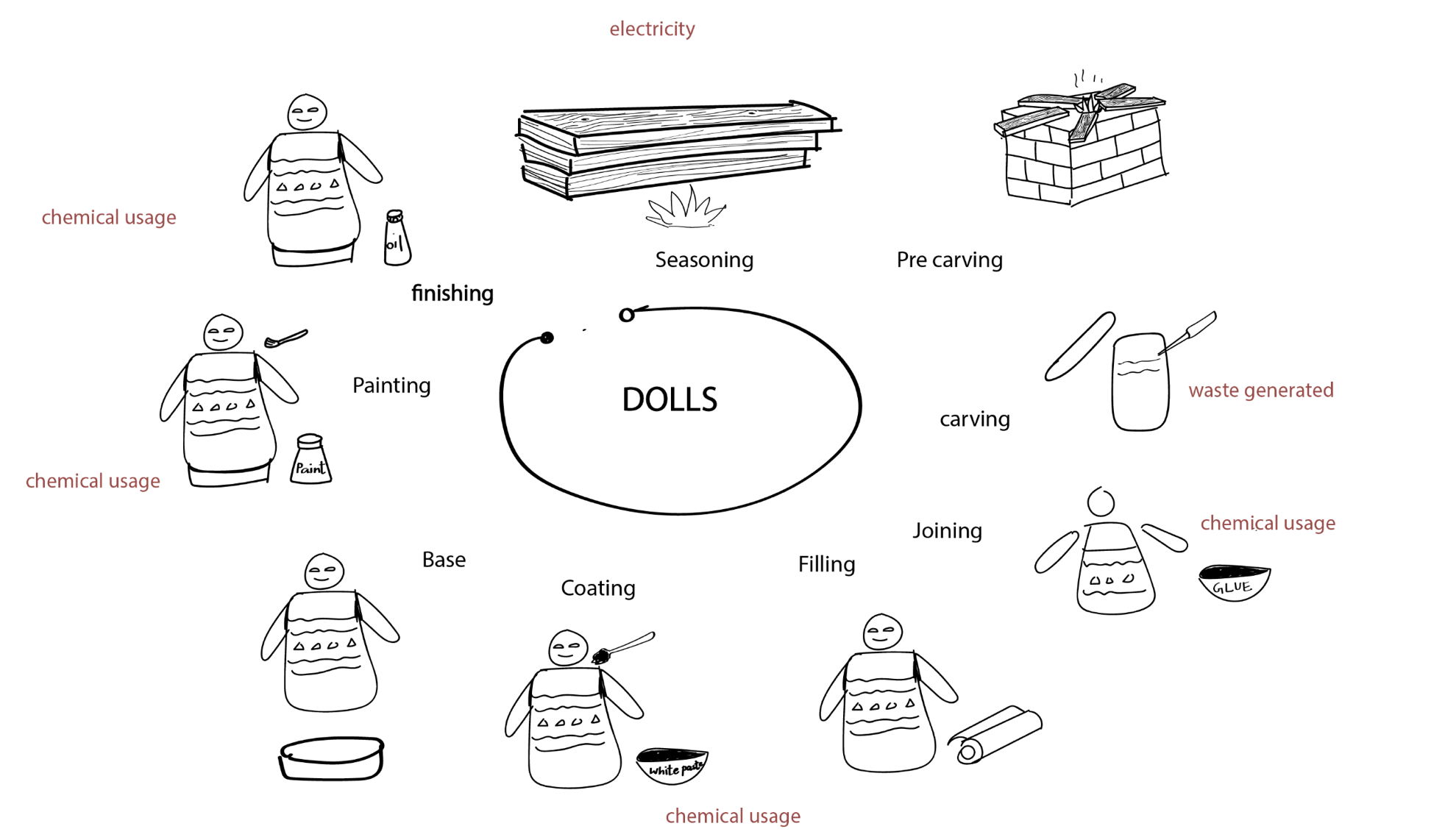
This craft is related to making products for festivals and performing arts. Puppet art in particular has a rich tradition and there are 4 distinct styles of puppets that can be crafted. These include: string, shadow, glove and rod. A way in which you can distinguish one type of puppet style from the other is through looking at the way the puppet was manipulated in the making process.
The joy of Dolls and Toys:
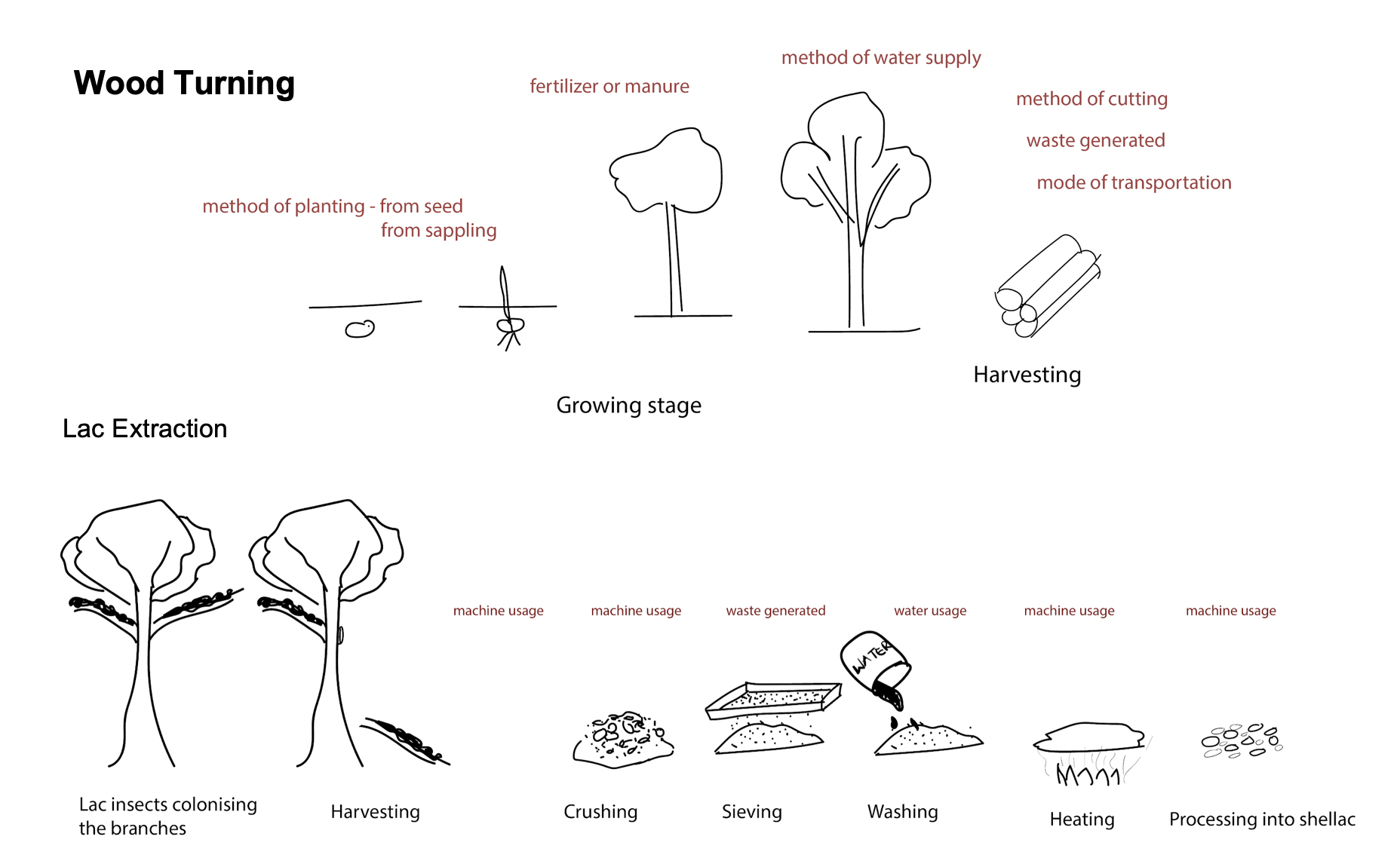
Depending on the culture and abundance of particular raw materials, different regions in India are known for specific types of childrens toys. The toys are produced from an array of materials across the country such as clay toys, cloth toys, palm leaf based toys and wood based toys. Toy and doll making is practised in lots of regions in India and it is also a family enterprise. This craft is practised in many places such as: Lucknow, West Bengal, Mumbai and many others. You too can be in possession of these distinct toy crafts by simply browsing through here!
Grass, Leaf, Reed and Fibre crafts:
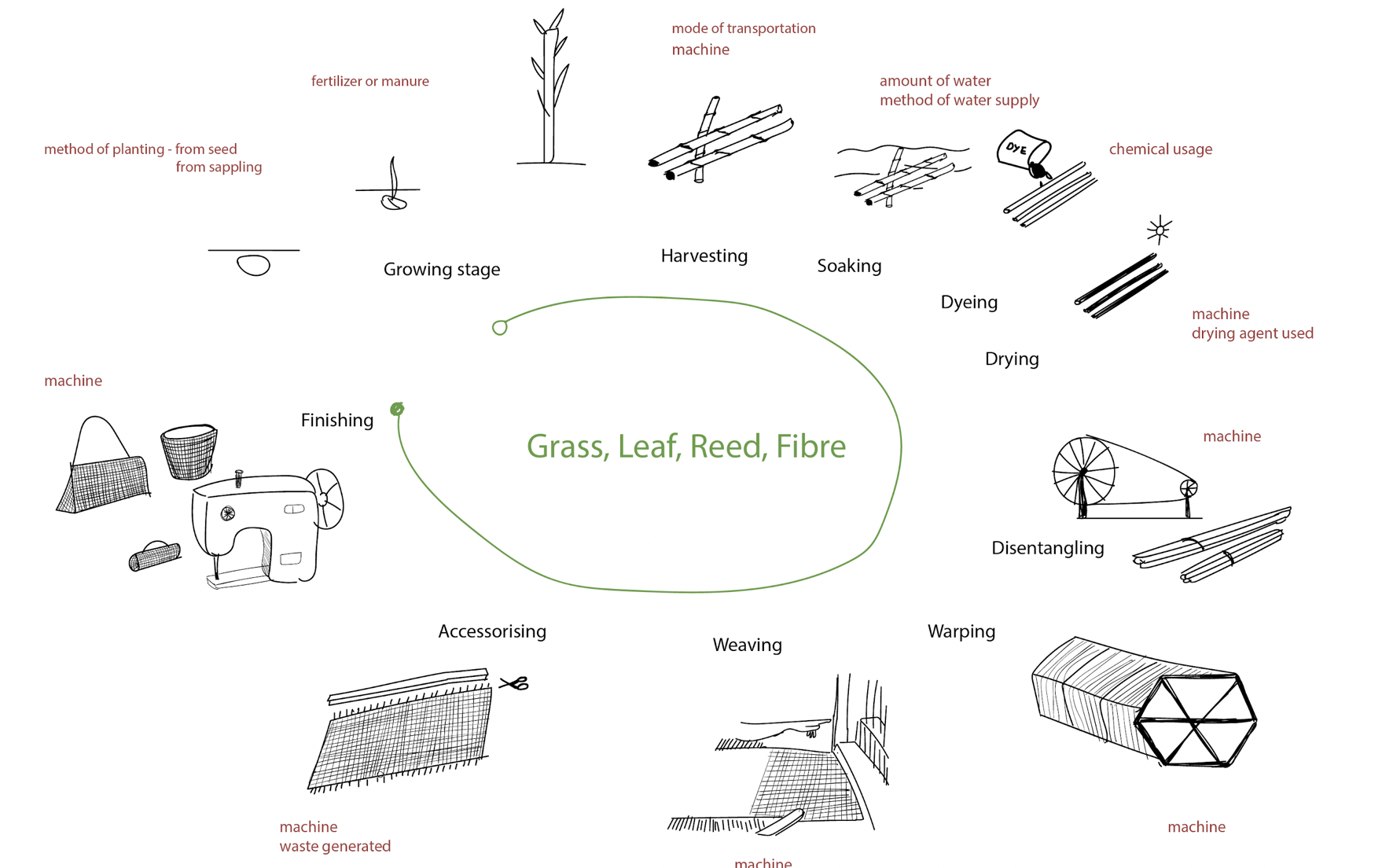
Natural fibres have been used to make a whole variety of household products traditionally within an array of cultures. Different parts of plants are used to create different hand crafts such as: basketry, bags, lampshades, footwear and boxes. Fibers in particular can be extracted from the bark of banana, jute, ramie and hemp plants/trees. It can also be extracted from the stem of banana, palm and bamboo trees, also the leaf of palm, sisal, agave and screw pine can be used. Furthermore, seeds and grass can be used.
The major regions which are involved in this specific craft are: Almora and Dehradun in Uttaranchal, Kullu in Himachal Pradesh and many other regions.
The classical metal images:
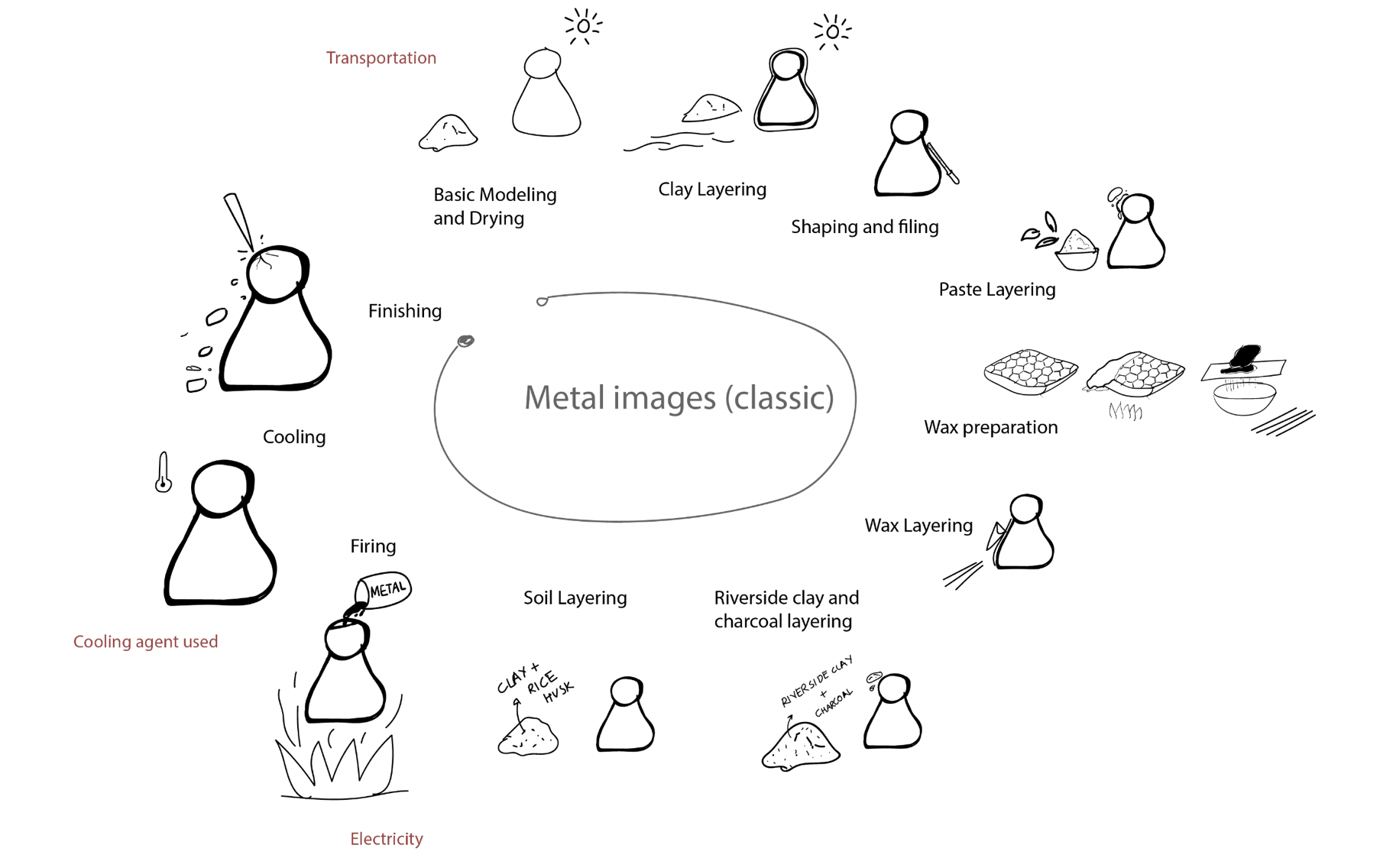
The lost wax casting method is used to draw images on metal and a famous example of this is Dhokra, this is one of the earliest and most ancient methods of metal casting. What is advantageous with this tribal art is that it can be crafted with simple and readily easy available raw materials. It is also believed that Dhokra may be the only living tradition of metal image making in Eastern Europe
This is a craft which is practiced in regions such as: Orissa, Bihar, West Bengal, Andhra Pradesh and many other regions as well.
Folk Metal Images:

This is a craft where intricate designs are embossed on the surface of metal sheets, these metal sheets act as a base. After the embossing process, the designs are painted in bronze or a golden colour. These crafts are then usually used as wall hangings, wall paintings and other decorative purposes. The main regions of this craft are: Ujjain in Bhopal, Bishnugarh in Jharkhand as well as a plethora of others.
There has always been an allure when it comes to SouthEast Asain crafts, and now through this blog I'm sure you understand why! There's an ocean of things to pick from when it comes to SoutEast Asain crafts and all you have to do is browse through the Rural Handmade website to find what suits you best! Whether it be a more authentic piece or something that has been adapted for the modern world, Rural Handmade is the place to look!
Recommended

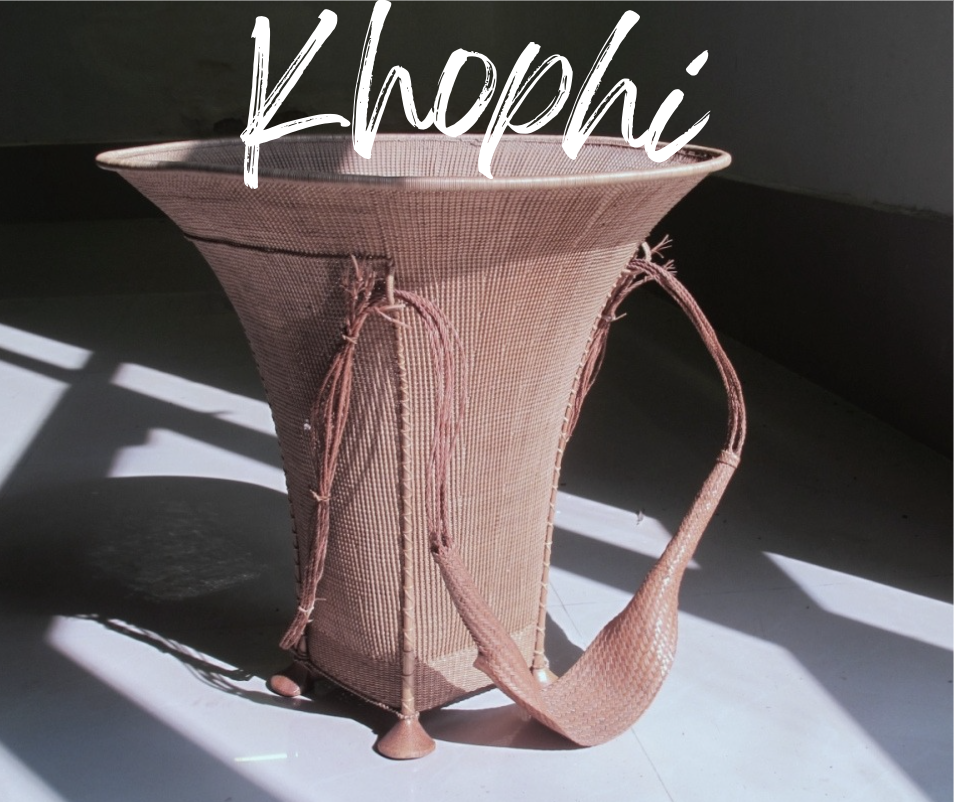
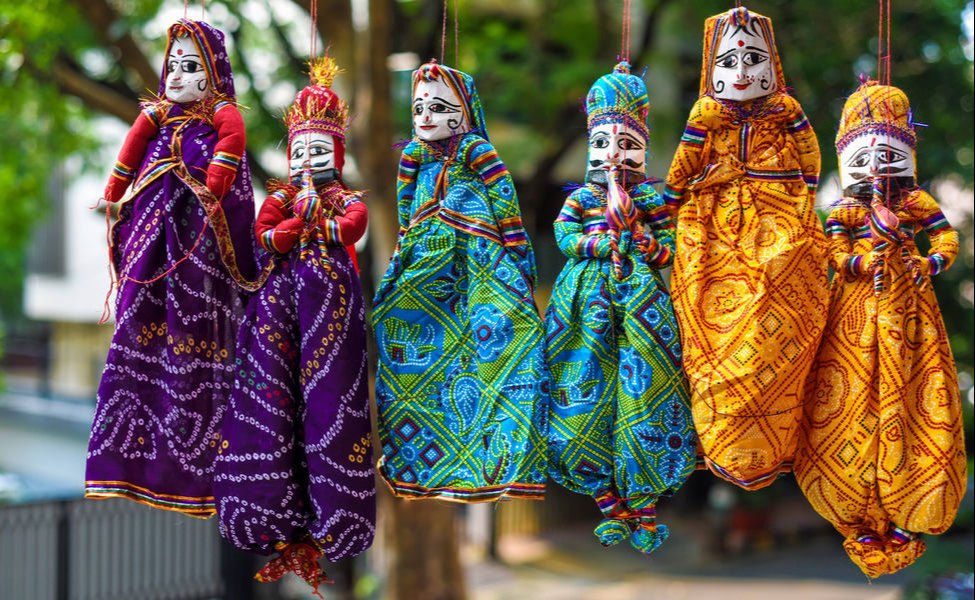
Wholesale / B2b Kathputli Puppets From Ahemdabad
Dec 16, 2024





